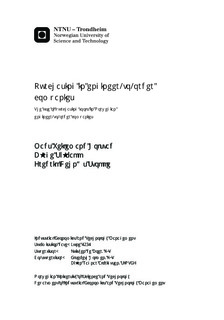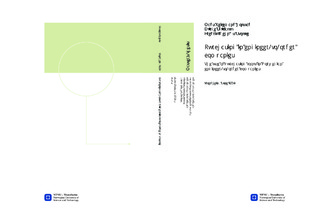| dc.description.abstract | This master?s thesis is written as a contribution to the MARGIN project, which is a three-year research project conducted by Kongsberg Maritime, Noca, Roxar and Fugro OCEANOR (Fugro), in collaboration with SINTEF, HiST and the NCEI cluster. Further, the master?s thesis is a continuation of a specialization project written by the authors in fall 2011. In the specialization project, Fugro was chosen as a collaborating partner. This collaboration is continued in this master?s thesis.
Following in the lines of the MARGIN project and an identified theoretical gap with respect to the engineer-to-order (ETO) production situation, we set out to explore how the level of purchasing sophistication affects the use of purchasing portfolio approaches in Norwegian ETO companies. To answer this problem, we have conducted three literature reviews and mixed methods research; the latter comprising qualitative action research and quantitative survey research. Literature reviews on purchasing portfolio approaches and ETO were conducted in fall 2011 and are further refined in this master?s thesis. The specialization project brought forth a need for further research with respect to purchasing sophistication. As such, a literature review on purchasing sophistication was conducted at the departure of this master?s thesis. Findings from the literature reviews were brought together in a theoretical framework. Following the empirical investigation, this framework was further refined with gained knowledge from both survey- and action research. This refined framework was thereafter utilized in analyzing the connections between the three main topics of purchasing portfolio approaches, purchasing sophistication and ETO.
Survey research established two statistically significant connections between purchasing portfolio approaches and purchasing sophistication. First, the use of purchasing portfolio approaches was found to have a significant relationship with having a sourcing strategy. The latter variable further displayed a statistically significant higher level of purchasing sophistication for companies in possession of a sourcing strategy. Second, the use of purchasing portfolio approaches indicated a statistically significant relationship with the skills of the purchasing professionals; the latter identified as a dimension of purchasing sophistication. Based on these findings, we argued that the use of purchasing portfolio approaches may lead to a higher level of purchasing sophistication ? both by establishing sourcing strategies and facilitating the development of the skills pertaining to the purchasing professionals. Thereafter, action research findings enabled us to develop a segmentation model, differentiating between prevalent purchasing portfolio approaches based on relevant characteristics of purchasing sophistication. Hence, we developed a tool for choosing an appropriate purchasing portfolio approach, given the company?s level of purchasing sophistication.
In investigating the relationship between purchasing sophistication and the ETO production situation, we employed both survey and action research in order to evaluate ETO companies? level of purchasing sophistication. This evaluation was further utilized in respect to the connection between purchasing portfolio approaches and ETO. Here, survey and action research findings revealed several benefits for an ETO company to use a purchasing portfolio approach. As such, we utilized the previously developed segmentation model, recommended a purchasing portfolio approach by taking into account the preceding evaluation of purchasing sophistication of ETO companies. This led us to suggest that an ETO company, with similar characteristics as Fugro, should adopt the purchasing portfolio approach by van Weele (2010). In addition, the action research findings enabled us to modify the suggested approach, in order to take into consideration the identified power and dependence characteristics found prevalent for ETO companies with similar characteristics as Fugro. These action research findings also enabled us to provide guidelines for the use of such an approach.
In conclusion, we have established a relationship between purchasing portfolio approaches, purchasing sophistication and ETO. As such, we have, in an elaborate manner succeeded in answering the purpose of this master?s thesis. | |

